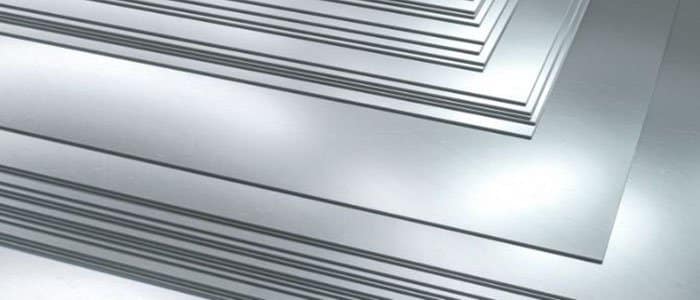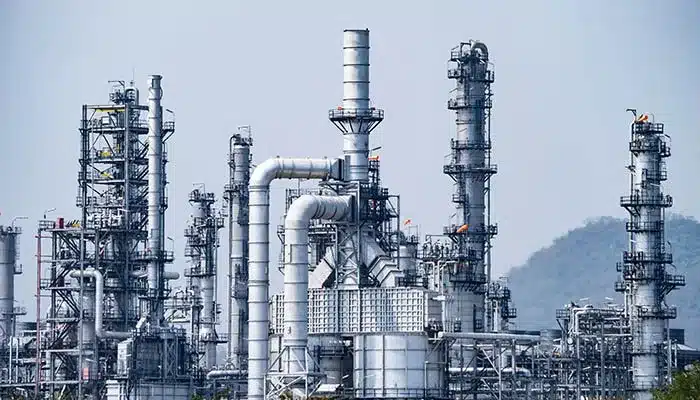In the vast network of modern industry, pipelines are the arteries, transporting essential fluids and gases from point A to point B. But what connects these arteries, ensuring they are secure, leak-proof, and maintainable? The answer lies in a seemingly simple yet critically important component: the flange. Specifically, the stainless steel flange stands out as a cornerstone of safety, durability, and efficiency in pipeline transportation.
This comprehensive guide will delve into the pivotal role of stainless steel flanges, exploring why they are the preferred choice in demanding environments and how they contribute to the integrity of entire pipeline systems.
What is a Stainless Steel Flange?
At its core, a flange is a mechanical component that connects pipes, valves, pumps, and other equipment to form a piping system. It provides an easy access point for cleaning, inspection, or modification.
A stainless steel flange is one manufactured from stainless steel, an alloy renowned for its exceptional corrosion resistance. This property is not just a minor benefit; it is the fundamental reason for its widespread use in pipeline transportation, where exposure to corrosive media is a constant challenge.
Why Stainless Steel? The Core Advantages in Pipeline Systems
Choosing the right material for a flange is a decision that impacts the entire system’s lifespan and safety. Here’s why stainless steel is often the material of choice:
- Unmatched Corrosion Resistance: This is the primary advantage. Whether transporting water, chemicals, oil, or gas, pipelines face threats from rust and chemical degradation. Stainless steel forms a passive chromium oxide layer on its surface, protecting it from corrosion and ensuring a long, reliable service life.
- Exceptional Strength and Durability: Stainless steel flanges can withstand high pressure, extreme temperatures, and mechanical stress. This robustness makes them suitable for high-pressure applications in industries like oil & gas, chemical processing, and power generation.
- Hygienic and Easy to Clean: The smooth, non-porous surface of stainless steel prevents bacterial growth and makes it easy to clean. This is crucial in industries like food and beverage, pharmaceuticals, and water treatment, where purity is paramount.
- Low Maintenance and Long-Term Value: The initial cost of stainless steel flanges may be higher than other materials. However, their long life and low maintenance needs lead to a lower total cost over time. They resist rust and pitting, reducing the need for frequent replacements.
Key Roles of Stainless Steel Flanges in Pipeline Transportation
The role of a stainless steel flange extends far beyond simply connecting two pipes. They are integral to the system’s functionality and safety.
1. Providing a Secure and Leak-Proof Connection
The most fundamental role is to create a robust seal. When two flanges are bolted together with a gasket in between, they create a joint. This joint can handle a lot of internal pressure without leaking. This is vital for preventing product loss, environmental contamination, and hazardous situations.
2. Facilitating Maintenance and Inspection
Imagine a miles-long pipeline with no access points. A small leak or blockage would be a nightmare to fix. Flanges provide modular access. Technicians can easily unbolt a flanged section to inspect, clean, or replace a part of the pipeline without dismantling the entire system.
3. Allowing for System Flexibility and Adaptability
Industrial needs change. Flanges allow pipelines to be easily extended, rerouted, or modified. New sections of pipe, valves, or instruments can be added or removed by simply unbolting and re-bolting flanged connections, making the system adaptable to future requirements.
4. Connecting Different Equipment
A pipeline system is more than just pipes. It comprises pumps, valves, meters, and filters. Flanges provide the standardized interface to connect this diverse equipment seamlessly, ensuring a cohesive and functional system.
Common Types of Stainless Steel Flanges and Their Applications
Not all flanges are created equal. Different designs are suited for different tasks. Here are some of the most common types used in pipeline transportation:
- Weld Neck Flanges: Known for their long, tapered hub, these are ideal for high-pressure and high/low-temperature applications. The hub transfers stress from the flange to the pipe, making it extremely robust. Common in refineries and chemical plants.
- Slip-On Flanges: As the name suggests, these are slipped over the pipe and then welded both inside and out. They are easier to align and are a cost-effective option for lower-pressure applications.
- Blind Flanges: These are solid discs used to seal the end of a pipe or valve. They are essential for pressure testing a line or for temporarily or permanently closing off a section of a pipeline.
- Threaded Flanges: These flanges have threads that match the pipe, eliminating the need for welding. They are useful in explosive or flammable areas where welding is not permitted, but are generally not recommended for high-pressure services.
- Socket Weld Flanges: Similar to slip-on flanges, but they have a recessed socket where the pipe is inserted before being fillet welded. They are ideal for small-diameter, high-pressure pipelines.
Best Practices for Installation and Maintenance
To ensure the longevity and safety of a flanged connection, proper installation and maintenance are non-negotiable.
- Proper Gasket Selection: The gasket is the heart of the seal. It must be compatible with the fluid being transported and the operating temperature and pressure.
- Correct Bolt Tightening: Bolts must be tightened in a star or crisscross pattern to the manufacturer’s specified torque. Uneven tightening can lead to a leaky joint.
- Regular Inspection: Periodically inspect flanged connections for signs of leakage, corrosion, or bolt loosening. Early detection can prevent catastrophic failures.
- Cleanliness: Ensure flange faces are perfectly clean and free of debris before assembly. Any imperfection can compromise the seal.
Conclusion: An Indispensable Component for Safe and Efficient Transport
The stainless steel flange is far more than a simple connector. It is a carefully designed part that ensures safety, integrity, and efficiency in pipeline transportation systems worldwide. Its superior corrosion resistance, strength, and versatility make it an indispensable choice for industries that demand reliability.
Looking for stainless steel flanges and other fittings? Daxun Alloy Co., Ltd. is a professional stainless steel supplier. Contact us today to discuss your project with one of our stainless steel experts.




